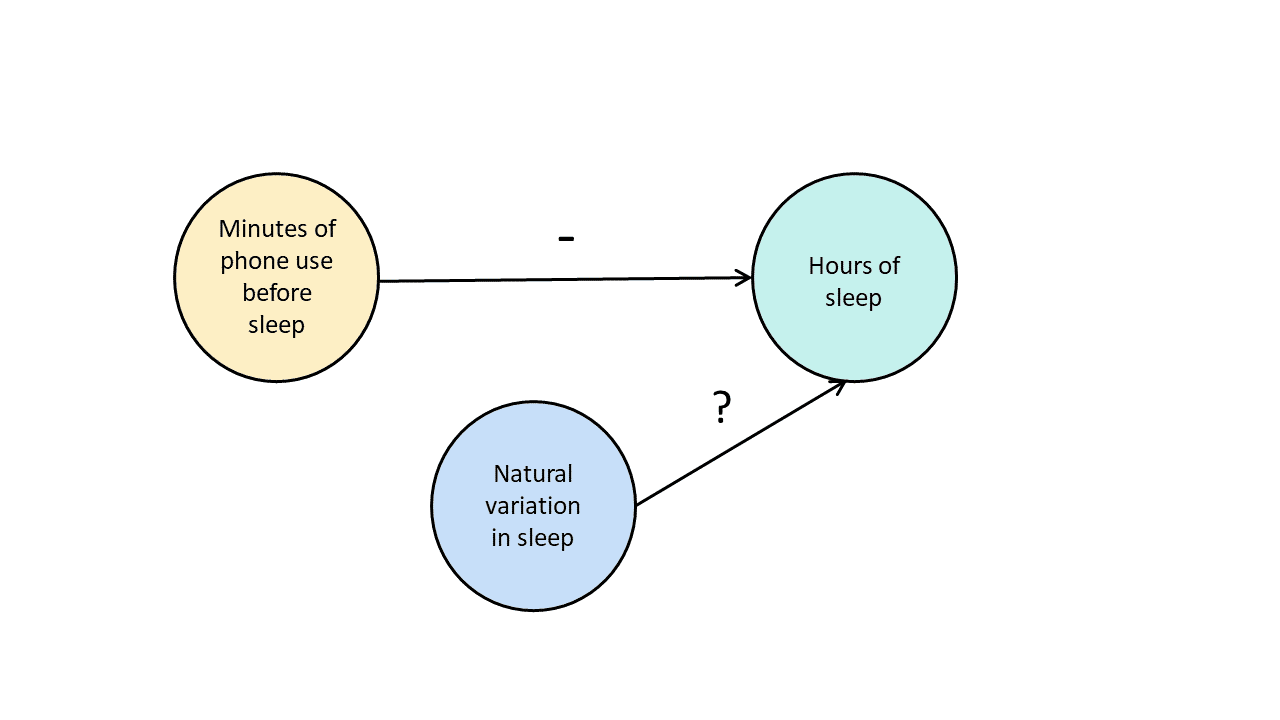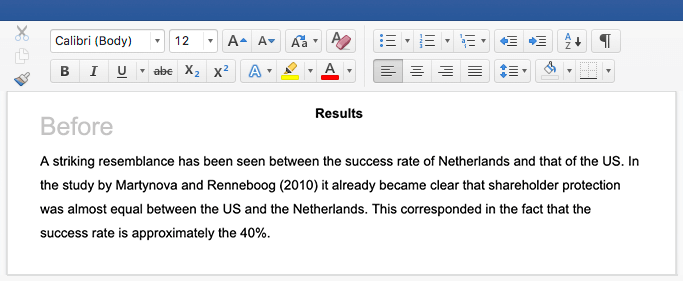Write a Hypothesis for Ben and Laura Based on What You Read About Their Experimental Design
A Quick Guide to Experimental Design | 5 Steps & Examples
Experiments are used to study causal relationships. You manipulate ane or more independent variables and measure their effect on one or more than dependent variables.
Experimental design ways creating a set of procedures to systematically examination a hypothesis. A adept experimental design requires a strong agreement of the organisation you are studying.
There are five primal steps in designing an experiment:
- Consider your variables and how they are related
- Write a specific, testable hypothesis
- Pattern experimental treatments to manipulate your independent variable
- Assign subjects to groups, either between-subjects or inside-subjects
- Plan how you will measure your dependent variable
For valid conclusions, you likewise need to select a representative sample and command any extraneous variables that might influence your results
Step i: Ascertain your variables
You should begin with a specific research question. We will work with two research question examples, i from health sciences and one from ecology:
To interpret your research question into an experimental hypothesis, you lot need to define the main variables and make predictions almost how they are related.
Commencement past simply list the independent and dependent variables.
| Research question | Contained variable | Dependent variable |
|---|---|---|
| Phone utilise and sleep | Minutes of phone utilise before sleep | Hours of sleep per night |
| Temperature and soil respiration | Air temperature simply higher up the soil surface | CO2 respired from soil |
And so you need to think nigh possible extraneous and confounding variables and consider how you lot might control them in your experiment.
| Extraneous variable | How to control | |
|---|---|---|
| Phone employ and sleep | Natural variation in sleep patterns among individuals. | Control statistically: measure the average difference between sleep with telephone utilise and sleep with telephone use rather than the average amount of slumber per treatment grouping. |
| Temperature and soil respiration | Soil moisture also affects respiration, and moisture can decrease with increasing temperature. | Control experimentally: monitor soil moisture and add water to make sure that soil moisture is consistent across all treatment plots. |
Finally, you tin can put these variables together into a diagram. Use arrows to evidence the possible relationships between variables and include signs to show the expected direction of the relationships.

Hither nosotros predict that the amount of telephone use will have a negative upshot on hours of sleep, and predict an unknown influence of natural variation on hours of sleep.

Here we predict that increasing temperature will increase soil respiration and decrease soil moisture, while decreasing soil wet will pb to decreased soil respiration.
Stride 2: Write your hypothesis
Now that you have a strong conceptual understanding of the organization you are studying, yous should be able to write a specific, testable hypothesis that addresses your research question.
| Nil hypothesis (H0) | Alternate hypothesis (H1) | |
|---|---|---|
| Phone use and sleep | Telephone use before sleep does not correlate with the amount of sleep a person gets. | Increasing phone employ before slumber leads to a decrease in sleep. |
| Temperature and soil respiration | Air temperature does not correlate with soil respiration. | Increased air temperature leads to increased soil respiration. |
The next steps will describe how to design a controlled experiment. In a controlled experiment, y'all must be able to:
- Systematically and precisely dispense the contained variable(s).
- Precisely measure the dependent variable(s).
- Command any potential confounding variables.
If your report arrangement doesn't match these criteria, there are other types of enquiry you can apply to answer your research question.
What tin can proofreading exercise for your paper?
Scribbr editors not only right grammer and spelling mistakes, but also strengthen your writing past making sure your paper is free of vague language, redundant words and bad-mannered phrasing.


Meet editing case
Step three: Design your experimental treatments
How y'all dispense the independent variable can affect the experiment's external validity – that is, the extent to which the results can be generalized and applied to the broader world.
First, y'all may need to determine how widely to vary your independent variable.
- only slightly above the natural range for your written report region.
- over a wider range of temperatures to mimic hereafter warming.
- over an extreme range that is beyond whatever possible natural variation.
2nd, you may need to choose how finely to vary your independent variable. Sometimes this choice is made for you past your experimental system, but often you will need to determine, and this volition bear upon how much yous tin can infer from your results.
- a categorical variable: either as binary (yep/no) or as levels of a gene (no phone utilise, low telephone use, high phone apply).
- a continuous variable (minutes of phone utilise measured every dark).
Pace iv: Assign your subjects to treatment groups
How you utilize your experimental treatments to your exam subjects is crucial for obtaining valid and reliable results.
Offset, you need to consider the study size: how many individuals volition exist included in the experiment? In full general, the more subjects yous include, the greater your experiment's statistical power, which determines how much confidence yous can have in your results.
Then you need to randomly assign your subjects to handling groups. Each group receives a different level of the treatment (e.g. no phone utilize, low phone utilize, high phone use).
Y'all should also include a control grouping, which receives no handling. The control grouping tells us what would accept happened to your test subjects without whatsoever experimental intervention.
When assigning your subjects to groups, there are 2 principal choices you demand to make:
- A completely randomized design vs a randomized cake design.
- A between-subjects design vs a within-subjects design.
Randomization
An experiment tin be completely randomized or randomized within blocks (aka strata):
- In a completely randomized design, every subject is assigned to a treatment group at random.
- In a randomized cake blueprint (aka stratified random blueprint), subjects are outset grouped co-ordinate to a feature they share, and then randomly assigned to treatments within those groups.
| Completely randomized design | Randomized block design | |
|---|---|---|
| Phone use and sleep | Subjects are all randomly assigned a level of phone use using a random number generator. | Subjects are kickoff grouped by historic period, and so phone use treatments are randomly assigned within these groups. |
| Temperature and soil respiration | Warming treatments are assigned to soil plots at random past using a number generator to generate map coordinates within the study area. | Soils are get-go grouped by boilerplate rainfall, and and then treatment plots are randomly assigned inside these groups. |
Sometimes randomization isn't practical or ethical, so researchers create partially-random or even non-random designs. An experimental design where treatments aren't randomly assigned is called a quasi-experimental design.
Between-subjects vs. inside-subjects
In a between-subjects blueprint (also known equally an contained measures pattern or classic ANOVA blueprint), individuals receive simply one of the possible levels of an experimental treatment.
In medical or social research, you lot might likewise use matched pairs within your between-subjects design to make certain that each treatment grouping contains the same variety of test subjects in the same proportions.
In a within-subjects design (also known every bit a repeated measures blueprint), every individual receives each of the experimental treatments consecutively, and their responses to each treatment are measured.
Inside-subjects or repeated measures can as well refer to an experimental pattern where an effect emerges over time, and individual responses are measured over time in social club to measure this effect equally it emerges.
Counterbalancing (randomizing or reversing the lodge of treatments amongst subjects) is oft used in within-subjects designs to ensure that the order of handling application doesn't influence the results of the experiment.
| Between-subjects (contained measures) blueprint | Within-subjects (repeated measures) blueprint | |
|---|---|---|
| Phone apply and sleep | Subjects are randomly assigned a level of phone use (none, low, or high) and follow that level of phone apply throughout the experiment. | Subjects are assigned consecutively to zero, low, and high levels of phone use throughout the experiment, and the order in which they follow these treatments is randomized. |
| Temperature and soil respiration | Warming treatments are assigned to soil plots at random and the soils are kept at this temperature throughout the experiment. | Every plot receives each warming treatment (i, three, 5, 8, and 10C above ambient temperatures) consecutively over the course of the experiment, and the order in which they receive these treatments is randomized. |
Footstep 5: Measure out your dependent variable
Finally, you need to determine how y'all'll collect data on your dependent variable outcomes. You should aim for reliable and valid measurements that minimize bias or error.
Some variables, like temperature, can be objectively measured with scientific instruments. Others may demand to exist operationalized to plough them into measurable observations.
- Enquire participants to record what time they go to sleep and get upward each 24-hour interval.
- Enquire participants to wear a sleep tracker.
How precisely you mensurate your dependent variable besides affects the kinds of statistical analysis you can employ on your data.
Experiments are always context-dependent, and a good experimental blueprint volition take into account all of the unique considerations of your study system to produce information that is both valid and relevant to your inquiry question.
Oftentimes asked questions most experiments
- What is experimental design?
-
Experimental design means planning a gear up of procedures to investigate a human relationship between variables. To design a controlled experiment, you need:
- A testable hypothesis
- At to the lowest degree one independent variable that can exist precisely manipulated
- At to the lowest degree one dependent variable that tin be precisely measured
When designing the experiment, you lot decide:
- How you volition manipulate the variable(s)
- How you volition control for any potential confounding variables
- How many subjects or samples will exist included in the study
- How subjects will be assigned to treatment levels
Experimental design is essential to the internal and external validity of your experiment.
- What are independent and dependent variables?
-
You tin recollect of independent and dependent variables in terms of cause and consequence: an contained variable is the variable you remember is the crusade, while a dependent variable is the effect.
In an experiment, you manipulate the independent variable and measure the outcome in the dependent variable. For example, in an experiment near the effect of nutrients on crop growth:
- Theindependent variableis the corporeality of nutrients added to the crop field.
- Thedependent variable is the biomass of the crops at harvest time.
Defining your variables, and deciding how you lot will dispense and measure them, is an important part of experimental design.
- What is a misreckoning variable?
-
A confounding variable, also called a confounder or misreckoning factor, is a tertiary variable in a study examining a potential crusade-and-effect relationship.
A confounding variable is related to both the supposed cause and the supposed effect of the report. It tin exist hard to split up the true outcome of the independent variable from the issue of the confounding variable.
In your enquiry pattern, it's important to identify potential confounding variables and plan how you lot will reduce their touch.
Is this article helpful?
You lot take already voted. Thanks :-) Your vote is saved :-) Processing your vote...
Source: https://www.scribbr.com/methodology/experimental-design/
0 Response to "Write a Hypothesis for Ben and Laura Based on What You Read About Their Experimental Design"
Post a Comment